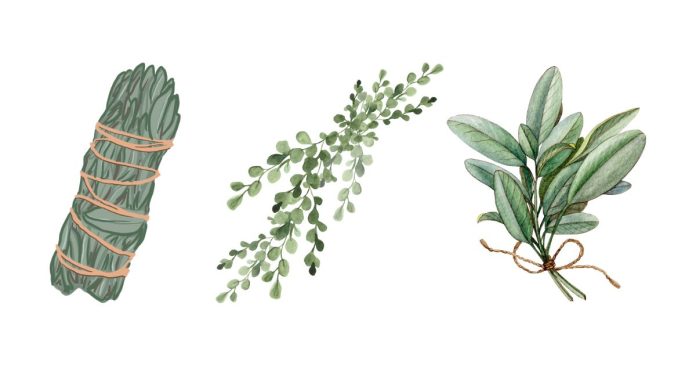Sage is a popular herb known for its earthy, slightly peppery, and somewhat citrusy flavor. It’s commonly used in various dishes, especially in stuffing, poultry, soups, and sauces. However, if you find yourself without sage or simply want to explore different flavors, you might be wondering: what are some good substitutes for sage?
Luckily, there are several herbs and spices that can stand in for sage while still imparting a delightful taste to your recipes. Here’s a guide to some of the best sage substitutes:
1. Thyme
Thyme is one of the closest substitutes for sage. It has a similar earthy flavor and works well in savory dishes, such as roasted meats, stews, and sauces. While thyme is slightly milder and less peppery than sage, it can provide the herbal depth you’re looking for in most recipes.
How to Use It: Use fresh thyme as a 1:1 replacement for sage in a recipe. If using dried thyme, reduce the amount slightly since dried herbs are more concentrated than fresh.
2. Rosemary
Rosemary is another herb with a bold and woody flavor that can stand in for sage, especially in Mediterranean or Italian-inspired dishes. It has a stronger, more pine-like taste but still complements rich dishes such as roasted meats, pasta, and stuffing.
How to Use It: Since rosemary is more intense than sage, use it sparingly. Start with about half the amount of rosemary as you would sage and adjust to taste.
3. Marjoram
Marjoram is a mild herb that’s often considered a close relative to oregano. It has a sweet, floral flavor with hints of citrus and woodiness, which makes it a good substitute for sage in recipes like soups, sausages, and poultry dishes.
How to Use It: Use marjoram in a 1:1 ratio as a replacement for sage, particularly when you want a milder, more delicate flavor.
4. Oregano
Oregano has a pungent, slightly bitter flavor that works well in savory dishes. Although it’s more commonly used in Mediterranean and Italian cooking, oregano can replace sage in many recipes, especially those that are robust in flavor, such as casseroles, stews, and marinades.
How to Use It: Use dried oregano in a slightly smaller amount than sage, as it tends to be stronger. Fresh oregano can be used in equal quantities.
5. Tarragon
Tarragon has a distinct flavor profile, with hints of anise and licorice. While it’s not a direct substitute for sage, tarragon can add a unique and delightful flavor to dishes like chicken, fish, or even creamy sauces. If you’re looking for an herb with a bit of an unconventional twist, tarragon is a good choice.
How to Use It: Since tarragon’s flavor is quite different from sage, start by using it in smaller amounts, adjusting to taste.
6. Savory
Savory is a lesser-known herb that can be an excellent substitute for sage in savory recipes. It has a peppery, slightly spicy flavor with hints of thyme and marjoram, making it a suitable alternative in both meats and vegetable dishes.
How to Use It: Use savory in a 1:1 ratio as a sage substitute. It works particularly well in soups, stews, and sausage dishes.
7. Italian Seasoning
Italian seasoning is a convenient blend of dried herbs like basil, oregano, thyme, and rosemary. While it may not replicate the exact flavor of sage, it can serve as a versatile alternative in various dishes, particularly Italian or Mediterranean-style meals.
How to Use It: Use Italian seasoning as a substitute in a 1:1 ratio for sage. Keep in mind that it will provide a broader flavor profile, so it may not be as precise as using a single herb.
8. Lemon Balm
If you’re looking for a light, citrusy flavor, lemon balm is a great choice. While it’s not as herbal or earthy as sage, its refreshing taste can lend a unique twist to dishes like roasted chicken, vegetables, or even salads.
How to Use It: Use lemon balm in a 1:1 ratio for sage, particularly if you’re looking to add a zesty, bright note to your meal.
9. Bay Leaves
Bay leaves offer a subtle herbal flavor with hints of mint, eucalyptus, and pepper. While they aren’t an exact replacement for sage, they work well in slow-cooked dishes like soups, stews, and braises, where their flavor can infuse the dish over time.
How to Use It: Add 1 or 2 whole bay leaves to a dish in place of sage, and remove them before serving.
10. Sage-Infused Oil
If you’re out of fresh or dried sage but have some sage-infused oil on hand, this can be a good substitute in recipes that call for sage’s aromatic qualities. You can use it to drizzle over roasted meats, pasta, or vegetables for that sage-like flavor.
How to Use It: Use sage-infused oil to replace sage in cooking or as a finishing touch in dishes.
While sage has a distinct flavor that’s hard to replicate, these herbs and spices provide a great alternative when you’re in need of a substitute. Whether you’re looking for something earthy like thyme or a little more unique like tarragon, there’s a substitute out there for every dish. Experimenting with these herbs can lead to new and exciting flavor profiles in your cooking!
So next time you’re preparing a recipe that calls for sage, don’t be afraid to try something new and discover the perfect flavor match.


